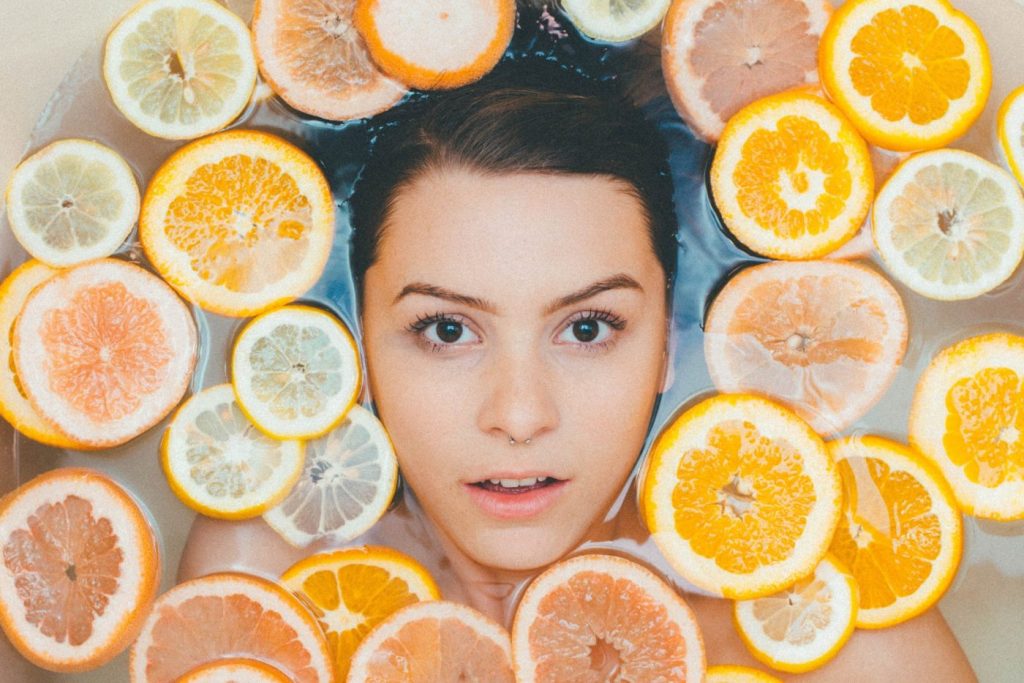Every year, we comb through multiple blogs to find those who go above and beyond to educate, inspire and empower. We have been impressed with them surely and also want them. But still, it is difficult to find a product in the store that comes out perfect for personal care products for skincare. One wants it without any harmful ingredients, chemicals, or side effects. Some researchers from EWG have done various studies on the safety of compounds and also have suspected the hazards in personal care products that come into our daily use.
Top tips for safer products
Product type to use or not:
| SOAP | Avoid: Triclosan, triclocarbon |
| SKIN MOISTURIZER AND LIP PRODUCTS | Avoid: Vitamin A(retinyl acetate, retinyl palmitate) in daily time products |
| HAND SANITIZERS | Pick: Ethanol is at least 60% alcohol |
SUNSCREEN
| Say NO to: SPF above 50 Oxybenzone Retinyl palmitate Added insect repellent
Say YES to: Zinc oxide or titanium dioxide as active ingredients, SPF 15 to 50, depending on skin coloration, time outside, shade, and cloud cover |
| HAIRCARE | Avoid or limit: Dark permanent hair dyes Chemical hair strengtheners |
NAILS
| Avoid: Formaldehyde or formalin in polish Toluene, triphenyl phosphate (TPP) in polish |
Click here to know about vitamin types, symptoms, and deficiencies
Skincare Tips for babies and young children:
Children are not adults and they need extra care than adults. They are exposed more to contaminants in air, water, food and personal care products. They are in their nascent stage and immature organ systems are less capable of fending off chemicals assaults. Any damage to the developing body may lead to disease in later life.
Parents who are the caretaker of them can make healthy choices by using fewer personal care products on their children.
| BABY WIPES | Avoid: Bronopol Fragrance DMDM hydantoin |
| DIAPER CREAM | Avoid: Boric acid BHA Fragrance |
| SUNSCREEN | Infants under 6 months don’t belong to the sun, and they should not wear sunscreen. However, older babies or children use protective clothing or sunscreen that provides good UVA and UVB protection. use enough and reapply. often |
| BABY POWDER | Skip it! Due to auto exhaust or secondhand smoke, the tiny airborne particles can damage a baby’s delicate, developing lungs |
Skincare Tips for Teens and Tweens:
Teens use cosmetics and sometimes most of them use a lot. From hair gels, hair straighteners, curlers to eye makeup, body wash, and lotions, without knowing which one is perfect for them or not.
Reason: EWG did research and found that adolescent’s bodies are contaminated with chemicals when they come in contact with chemicals or skincare products. They have detected 16 potentially toxic chemicals, phthalates, triclosan, paraben, and musks- in urine and blood samples from 20 teen girls. Teens are mostly sensitive to hormone-disrupting chemicals, specifically at the age of puberty, precisely when girls experiment with a variety and number of skincare products. Teens can easily make safer choices by reducing the number of body care products. They also have to view the marketing claims and check ingredients. EWG provides safe guidelines to select safer products:
| ACNE PRODUCTS | Avoid: Triclosan Parabens PEGs and ceteareth |
| PERFUMES AND BODY SPRAY | Avoid: Phthalates |
MAKEUP | Avoid: Loose powders Vitamin A (retinol, retinyl palmitate, retinyl acetate) in skin and lip products
Choose: Less hazardous make-up |
| SUN PROTECTION | Be smart! Sunburn in children and teens may increase the deadliest form of skin cancer- melanoma.
Avoid tanning beds, because tanning booths expose the skin 15 times more to UV than sunlight. Its use before age 30 can cause a 75% increase in melanoma. |
Skincare Tips for women:
Women are more attracted to skincare and beauty products and they use a dozen products containing more than 150 different ingredients. However, most cosmetic chemicals are designed to penetrate into the skin completely, and they do. Some researchers say that the level of cosmetic ingredients found in our bodies can cause biological damage.
| ANTI-AGING PRODUCTS | Avoid: Alpha and beta hydroxy acids (lactic acid and glycolic acid) |
| HAIR DYE | Minimum use of dark, permanent hair dyes. It May contain coal tar, aminophenol, diaminobenzene, and phenylenediamine, all of which are linked to cancer, |
| SKIN LIGHTENERS | Avoid skin lighteners with hydroquinone. FDA warns that this skin-bleaching chemical can cause skin disease that is called ochronosis, which can lead to black-blue lesions on exposed skin. |
| CHEMICAL HAIR STRAIGHTENERS | Many hair-straightening treatments use harsh or toxic chemicals and make misleading safety claims. Try to avoid their use or limit them. Avoid keratin treatments that contain a high level of formaldehyde. |
Skincare Tips for Men:
Average men use 6 products daily, containing 100 unique ingredients. Some ingredients are normally active, while some are linked to male reproductive system disorders.
| AFTERSHAVE | Avoid: Fragrance Oxybenzone Parabens |
| SHAVING CREAM | Avoid: DMDM hydantoin Fragrance Triclosan |
| SUNSCREEN | Wear sunscreen. A survey shows that one-third of the men wear sun protection, compared to more than 3 quarters of women. Choose adequate UVA and UVB protection. |
Shopping tips by ingredients:
Boric acid and sodium borate:
They disrupt hormones and harm the male reproductive system. Men working in boric acid-producing factories have a greater risk of increased sperm count.
Butylated Hydroxyanisole (BHA):
In animal studies, BHA produces liver damage, stomach cancers, and interferes with normal reproductive system and thyroid hormone levels.
Coal tar hair dyes:
Coal tar is a by-product of coal processing and causes human carcinogens. FDA sanctions coal tar in products as dandruff shampoos.
Formaldehyde:
It is a neurotoxicant and some hair straighteners contain a significant amount and release potentially toxic fumes during their use.
Lead and lead acetate:
It is a neurotoxin popular in black hair dyes.
Nanoparticles:
Zinc oxide and titanium dioxide nanoparticles are safer in the US- marketed sunscreen creams, but avoid sprays and powders containing these nanoparticles. They could be inhaled and enter into lungs and bloodstream.
Oxybenzone:
It is linked to irritation, sensitization, and allergies. A study shows more than 400 New York City women in their third trimester of pregnancy associated with the higher maternal concentration of oxybenzone with decreased birth weights among newborn baby girls and increases birth weight in newborn baby boys. Its metabolites may disrupt the hormone system.


